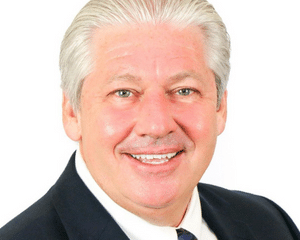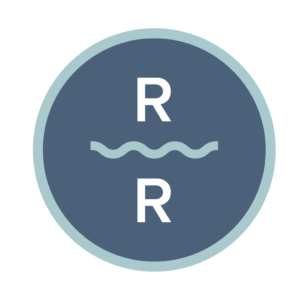Opioid Withdrawal Symptoms | Detox & Treatment For Opiate Use Disorder


- Last Modified: July 4, 2023
Opioid addiction is a serious and widespread issue that affects millions of people worldwide. Opioids are a class of drugs that include prescription painkillers such as oxycodone, hydrocodone, and fentanyl, as well as illegal drugs like heroin. Opioid addiction can lead to physical dependence, withdrawal symptoms, and even fatal overdose.
This class of drugs in particular are highly addictive due to the pleasurable effects they produce and prolonged use of opioids can lead to physical dependence, tolerance, and addiction. In addition to pain relief, opioids can also cause side effects such as drowsiness, constipation, and respiratory depression. It’s important to use opioids only as prescribed and under the supervision of a healthcare professional to avoid developing an opioid use disorder. Prolonged opioid use, even when properly prescribed, can lead to dependence – meaning that individuals may experience uncomfortable withdrawal symptoms when they stop using opioids.
What Causes Opioid Withdrawal?
When an individual becomes physically dependent on opioids, their body adjusts to the presence of the drug. When the drug is no longer present, the body reacts with withdrawal symptoms as it tries to regain balance. A person who is dependent on opioids will experience symptoms of withdrawal if they reduce or suddenly stop taking opioids. This dynamic can lead to a vicious cycle where the individual might cut back or stop using opioids, then experience uncomfortable withdrawal symptoms as a result, and thus return to taking the drug again to relieve these symptoms.
When it comes to treating opioid addiction, it is crucial to seek professional help as withdrawal from these drugs can be challenging and potentially dangerous. Treatment typically involves a combination of medications, counseling, and support to address both the physical and psychological aspects of addiction. Your healthcare provider will work with you to develop a personalized treatment plan that aligns with your goals.
There are different settings where withdrawal can take place:
- At-home withdrawal, which requires a slow and carefully managed process with the support of medicines and a strong support system. We strongly advise against this option as it may be dangerous.
- Dedicated facilities that specialize in detoxification (detox) provide a structured environment for withdrawal.
- In severe cases, withdrawal may occur in a regular hospital setting where symptoms can be closely monitored.
What Are The Symptoms Of Opioid Withdrawal?
As noted above, opioid withdrawal can be very uncomfortable and difficult for individuals going through the experience. It has often been compared to what can feel like a very bad flu. Opioid withdrawal, however, is not usually life-threatening.
Common symptoms of opioid withdrawal include:
- Muscle aches
- Runny nose and runny/watery eyes
- Sweating
- Yawning
- Anxiety
- Drug cravings
Other physical symptoms may include increased heart rate, high blood pressure, and abdominal cramps.
Observation & Monitoring
It is recommended to regularly monitor patients (3-4 times daily) for symptoms and complications.
What is Opiate Use Disorder (OUD)?
Opiate Use Disorder (OUD), also known as Opioid Use Disorder, is a medical condition characterized by the recurrent use of opioids, despite harmful and negative consequences. Individuals with Opioid Use Disorder may develop physical dependence and experience withdrawal symptoms when they stop using opioids.
It is considered a chronic disease that affects the brain chemically, as well as affects behavior, leading to physical dependence and tolerance. Opioid use disorder can develop from prescription painkillers, such as oxycodone and hydrocodone, or illegal drugs, such as heroin.
People struggling with opioid use disorder may continue to use opioids even when it causes problems in their personal relationships, work, school, or other responsibilities.
Individuals may also experience withdrawal symptoms when they try to stop using opioids. These withdrawal symptoms can include physical symptoms like muscle aches, runny nose, and high blood pressure, as well as psychological symptoms like anxiety, depression, and drug cravings. Taking an opioid for a prolonged or extended amount of time can lead to a higher tolerance of the substance, meaning that more of the substance will need to be taken in order to achieve the same desired effect. As a consequence, the body may become dependent upon this substance in order to avoid uncomfortable withdrawal symptoms.
Opioid use disorder is a treatable condition, and recovery is possible with the right support and treatment.
Opioid Dependence vs. Opioid Addiction
It’s important to identify the difference between dependence and addiction. Although these terms are often used interchangeably, opioid dependence refers to the physical changes that occur in the body when an individual uses opioids regularly. Dependence can occur even when the drugs are taken as prescribed. Addiction, on the other hand, refers to a complex disorder that involves physical, psychological, and social factors. It is characterized by compulsive drug-seeking behavior, despite negative consequences. Both opioid dependence and addiction should be identified and treated by a medical health professional.
Detox & Treatment For Opioid Addiction
Stopping the use of these drugs without medical supervision can be challenging and potentially hazardous. The typical course of treatment involves medication, therapy, and assistance. You and your provider will be able to identify and discuss the best possible plan for your care and treatment goals.
Opioid Detox
The first step in treating opioid addiction is detoxification, which involves the removal of opioids from the body. Detoxification should always be done under medical supervision, as withdrawal symptoms can be severe and potentially dangerous. In some cases, medication-assisted treatment (MAT) may be used to help manage and reduce the severity of withdrawal symptoms as well as drug cravings. Medication-assisted treatment combines behavioral therapy and medication to treat opioid addiction effectively.
Opioid Treatment Options
In a 2020 National Practice Guideline provided by The American Society of Addiction Medicine (ASAM), they emphasize the importance of assessing patients’ psychosocial needs be assessed. It recommends that patients should be offered psychosocial treatment in collaboration with qualified behavioral healthcare providers when it comes to OUD treatment.
However, it is noted that a patient’s decision to decline psychosocial treatment or the unavailability of such treatment should not hinder or delay medications for OUD. In addition, clinicians are advised to provide naloxone and training on its proper use for overdose reversal to patients with OUD and their household members/significant others. It is essential to acknowledge that OUD can co-exist with other substance use disorders, and patients who are actively using substances during OUD treatment may require increased support.
Begin Recovery
Medication
Medications can play a crucial role in OUD treatment, particularly in managing withdrawal symptoms and supporting recovery. Here are some commonly used medications:
- Methadone: Methadone is effective in relieving withdrawal symptoms and can be used for both detoxification and long-term maintenance of opioid dependence. Under medical supervision, the dose may be gradually reduced over time to minimize withdrawal symptoms. Some individuals may remain on methadone for an extended period to support their recovery.
- Buprenorphine: Buprenorphine, available as Subutex, can help alleviate withdrawal symptoms and shorten the duration of detox. Like methadone, it can also be used for long-term maintenance. Buprenorphine is often combined with Naloxone (Bunavail, Suboxone, Zubsolv), which helps prevent dependence and misuse.
- Clonidine: Clonidine is utilized to alleviate specific withdrawal symptoms such as anxiety, agitation, muscle aches, sweating, runny nose, and cramping. However, it does not help with cravings.
Other medications may be used to address specific symptoms:
- Naltrexone: Naltrexone can be used to prevent relapse and is available in pill form or as an injection. It is essential to note that taking naltrexone while opioids are still in the system can induce sudden and severe withdrawal.
- Sleep aids
- Medications for vomiting and diarrhea management
Long-Term Treatment Options
- Self-help groups such as Narcotics Anonymous or SMART Recovery provide peer support and guidance.
- Outpatient counseling, offering regular therapy sessions and support.
- Intensive outpatient treatment, including day hospitalization programs for more intensive support.
- Inpatient treatment, where individuals reside in a treatment facility for a period to receive comprehensive care.
It is important to address any underlying mental health conditions, such as depression, as they can increase the risk of relapse. Treating these disorders alongside addiction can enhance the chances of long-term recovery. Antidepressant medications may be prescribed when needed.
Signs of Opioid Use Disorder (OUD)
The Diagnostic and Statistical Manual of Mental Health Disorders, Fifth Edition (DSM-5) defines OUD as a “problematic pattern of opioid use leading to clinically significant impairment or distress”. Being able to identify OUD symptoms, can potentially save someone’s life. By recognizing the signs, you or a loved one can have the opportunity for clinical intervention, increasing the likelihood of effective treatment.
Some signs of OUD include:
- Using more opioids or opioid medications than intended
- Unsuccessful attempts to cut down or quit
- Spending a lot of time obtaining opioids
- Neglecting important responsibilities
Get Support For Opioid Abuse & Addiction Today
Opioid addiction is a chronic medical condition that requires proper medical care and treatment. If you or someone you know is struggling with opioid addiction, contact Riverside Recovery of Tampa today to learn more about our evidence-based treatment programs. Detoxification and treatment for opiate use disorder can help individuals overcome their addiction and lead healthy, fulfilling lives.
We offer a comprehensive approach to opioid addiction treatment, including behavioral therapies, medication, and ongoing support. Our team of experienced professionals is dedicated to providing individualized care and helping our clients achieve lasting recovery.
- Centers for Disease Control and Prevention–Opioid Use Disorder: Preventing and Treating
- Clinical Guidelines for Withdrawal Management and Treatment of Drug Dependence in Closed Settings. Geneva: World Health Organization; 2009. 4, Withdrawal Management. Available from: https://www.ncbi.nlm.nih.gov/books/NBK310652/
- NIDA. Naloxone for Opioid Overdose: Life-Saving Science. National Institute on Drug Abuse website. https://nida.nih.gov/publications/naloxone-opioid-overdose-life-saving-science. March 30, 2017 Accessed June 19, 2023.
- Substance Abuse and Mental Health Services Administration (SAMHSA)–Treatment for Opioid Use Disorder –
- MedlinePlus (U.S. National Library of Medicine)–Opiate and Opioid Withdrawal
- Kampman K, Jarvis M. American Society of Addiction Medicine (ASAM) National Practice Guideline for the Use of Medications in the Treatment of Addiction Involving Opioid Use. J Addict Med. 2015;9(5):358-367. doi:10.1097/ADM.0000000000000166